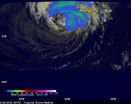(Press-News.org) The pressures of global trade may heighten disease incidence by dictating changes in land use. A boom in disease-carrying ticks and chiggers has followed the abandonment of rice cultivation in Taiwanese paddies, say ecologist Chi-Chien Kuo and colleagues, demonstrating the potential for global commodities pricing to drive the spread of infections. Their work appears in the September issue of ESA's journal Ecological Applications.
After Taiwan joined the World Trade Organization in 2001, active cultivation of rice paddies fell from 80 percent to 55 percent in just three years. The government of Taiwan subsidized twice-yearly plowing of abandoned fields to reduce the spread of agricultural pests into adjacent fields still in cultivation. Compliance has been spotty. Kuo found that, while plowing did not suppress rodent populations, it did inadvertently reduce the presence of the ticks and chiggers that use rodents as their primary hosts.
"The government considers only agricultural pests such as insects and rodents. They don't think about the disease factors," said Kuo. But land use policy can have complex and unexpected reverberations in the ecology of the landscape.
Chiggers, the larval stage of trombiculid mites, spread scrub typhus (Orientia tsutsugamushi), a bacterium that gets its name from the scrubby, dense vegetation that often harbors its flesh-loving host. Scrub typhus is a common culprit underlying visits to Southeast Asian hospitals for flu-like symptoms. Without antibiotics, the infection is often fatal. Ticks (Ixodidae) transmit bacteria spotted fever group rickettsiae, causing fever, aches and rash similar to Rocky Mountain spotted fever. Neither pest prefers to live underwater.
Hualien, Kuo's study area, is one of the least populous of Taiwan's counties, yet had nearly the highest incidence of scrub typhus from 1998-2007. The county is a smattering of small villages surrounded by a patchwork of flooded, plowed, and abandoned rice paddies.
Flooded paddies are poor habitat for ticks and chiggers, and so cultivation of rice, which locally means carefully managed flooding of fields to drown agricultural pests, likely suppresses ticks and chiggers as well. Even the seemingly unkillable ticks die after a few weeks of submersion, and chiggers are similarly terrestrial. Though studies are few, limited data indicate that most chiggers die after a month under water.
This study did not assess flooded paddies due to the difficulty of finding and collecting rodents, ticks, and chiggers underwater. Instead, Kuo trapped rodents in fallow and plowed fields and examined their tick and chigger passengers, testing the arachnids for presence of disease-causing rickettsial bacteria. He found 6 times as many ticks on the rodents living in fallow fields – and the proportion of infectious ticks in fallow fields was three times higher, compounding the risk. Chiggers rode rodents at a rate 3 times higher in fallow fields than plowed fields.
"This study is a great example of the kinds of indirect effects that trickle down from human policies," said Bob Parmenter, an ecologist unaffiliated with the study. "It tells a nice story about how changes in international trade barriers can have unforeseen consequences." Parmenter is director of the USDA's Scientific Services Division at Valles Caldera National Preserve near Los Alamos, New Mexico, and an expert on the influence of ecology on deadly Hantavirus outbreaks, like the current episode in Yosemite National Park (California, USA) that has infected nine visitors and killed three.
The consequences of economic pressures on land use are also present in the eastern United States, where the small farms of the eighteen and nineteenth centuries have reverted, to a large degree, to forest. With the return of deer and wildlands has come a rise in ticks, and concurrent rise in Lyme disease. Conversely, opening new land to farming or housing can bring its own disease risks.
Many studies have investigated influence of global forces on disease, said Kuo. "Most are focused on how climate change, global travel, or habitat destruction will affect the emergence of vector-borne and zoonotic disease. We show that economic organizations can actually affect human health, by influencing the landscape."
###
Title:
Cascading effect of economic globalization on human risks to scrub typhus and tick-borne rickettsial diseases. Ecological Applications volume 22 issue 6
Authors:
Chi-Chien Kuo, Geography and Environment, University of Southampton, Southampton, UK
Douglass A Kelt, Department of Wildlife, Fish, & Conservation Biology, University of California, Davis, CA, USA
Jing-Lun Huang, Pei-Yun Shu, Pei-Lung Lee, and His-Chieh Wang, Research and Diagnostic Center, Centers for Disease Control, Department of Health, Taipei, Taiwan, ROC
Contacts:
Chi-Chien Kuo: +44 (0)2380584319, ccckuo@ucdavis.edu
Douglass Kelt: 530-754-9481, dakelt@ucdavis.edu
His-Chieh Wang: +886-2-3393-5054, sjwang@cdc.gov.tw
Robert Parmenter: 505-428-7727, bparmenter@vallescaldera.gov
The Ecological Society of America is the world's largest community of professional ecologists and the trusted source of ecological knowledge. ESA is committed to advancing the understanding of life on Earth. The 10,000 member Society publishes five journals, convenes an annual scientific conference, and broadly shares ecological information through policy and media outreach and education initiatives. Visit the ESA website at http://www.esa.org or find experts in ecological science at http://www.esa.org/pao/rrt/.
END
Scientists and forecasters have been analyzing Tropical Storm Nadine using various NASA satellites as NASA's Global Hawk flew over the storm gathering information. Both the Global Hawk and NASA's TRMM satellite noticed that Nadine has continued to display tropical characteristics, indicating that it has not transitioned to an extra-tropical storm.
Forecasters noted that Nadine could have started transitioning into an extra-tropical storm, because there was little significant rainfall near Nadine's center of circulation yesterday, Sept. 19. However, satellite data and ...
Tried-and-true techniques could help optimize oilseed yield for biodiesel production, according to studies conducted by U.S. Department of Agriculture (USDA) scientists.
For more than 30 years, near infrared (NIR) reflectance spectroscopy has been used as a rapid and nondestructive method for measuring protein, moisture, and oil levels in whole grains. Now Agricultural Research Service (ARS) research leader Dan Long is studying how to use remote sensing tools to quickly assess seed oil quality and quantity before and after harvest.
ARS is USDA's chief intramural scientific ...
The sun's atmosphere dances. Giant columns of solar material – made of gas so hot that many of the electrons have been scorched off the atoms, turning it into a form of magnetized matter we call plasma – leap off the sun's surface, jumping and twisting. Sometimes these prominences of solar material, shoot off, escaping completely into space, other times they fall back down under their own weight.
The prominences are sometimes also the inner structure of a larger formation, appearing from the side almost as the filament inside a large light bulb. The bright structure around ...
In a preliminary clinical trial, investigators at Johns Hopkins have shown that even partially-matched bone marrow transplants can eliminate sickle cell disease in some patients, ridding them of painful and debilitating symptoms, and the need for a lifetime of pain medications and blood transfusions. The researchers say the use of such marrow could potentially help make bone marrow transplants accessible to a majority of sickle cell patients who need them.
After a median follow-up of two years, the transplants successfully eliminated sickle cell disease in 11 of 17 patients. ...
Scientists from Queen Mary, University of London have tracked bumblebees for the first time to see how they select the optimal route to collect nectar from multiple flowers and return to their nest.
In a paper published in PLOS Biology today (18 September), the scientists, working with the Harmonic Radar Group at Rothamsted Research, were able to use radar tracking to show how bumblebees discover flowers, learn their location and use trial and error to find the most efficient route between flowers over large distances.
Professor Lars Chittka and Dr Mathieu Lihoreau ...
An international team of physicists has pushed the boundaries on ultra-precise measurement by harnessing quantum light waves in a new way.
It is one thing to be able to measure spectacularly small distances using "squeezed" light, but it is now possible to do this even while the target is moving around.
An Australian-Japanese research collaboration made the breakthrough in an experiment conducted at the University of Tokyo, the results of which have been published in an article, "Quantum-enhanced optical phase tracking" in the prestigious journal, Science.
Leader ...
New Book Equips Readers With What It Takes To Feel Clear, Energized, Engaged, And Fulfilled In Today's Uncertain World
Prize-winning author, award-winning transformational trainer, and founder of the global Create Your Difference Community, Nadine Love announces the release of her newest book and workbook, Hot Confidence: Conscious Pathways to Take You from Mini-Me to Magnificent.
Hot Confidence is a beautiful, softbound, 200-page book filled with real-life stories and powerful life-coach strategies taught one-on-one by the world's most successful life coaches. The ...
Sunshine Coast TAFE student Abbie Williams is more determined than ever to launch her hairdressing career after landing a spot amongst some of Australia's top stylists at the Sunshine Coast International Fashion Week earlier this month.
The budding hairdresser, who is due to graduate in less than nine weeks, worked alongside some of the biggest names in the industry to primp, pin and prep hair for three back to back fashion shows.
The event celebrated the culmination of fashion week at Novotel Twin Waters, showcasing the talents of local and international designers ...
RentFoodBroke.com and BrokeLA.com provide real-world education, advice, tips, and resources on everything from finding affordable medical care to the cheapest movie theaters around town, as well as a full calendar of free and low-cost events to meet the needs of Angelenos and visitors alike.
What started as a fanciful "Wouldn't it be cool if..." idea during a night of serious partying has become the ultimate resource for living life on a budget in the greater LA area. "Many people think up 'great' ideas when they're drunk," said Hanina Stettin, "Head ...
Lee Enterprises Consulting, the world's largest alternative and renewable fuels consulting group, announced today that they will host their annual teleconference call on Tuesday, October 2, 2012 at 2:00 pm Central Standard Time. The one hour call is by-invitation-only and is open to biodiesel producers and plant owners, obligated parties, investors, lenders, small and others directly involved in the biodiesel industry. The group's annual call covers items that the group considers to be among the most pressing in the industry, and features industry experts to speak about ...

